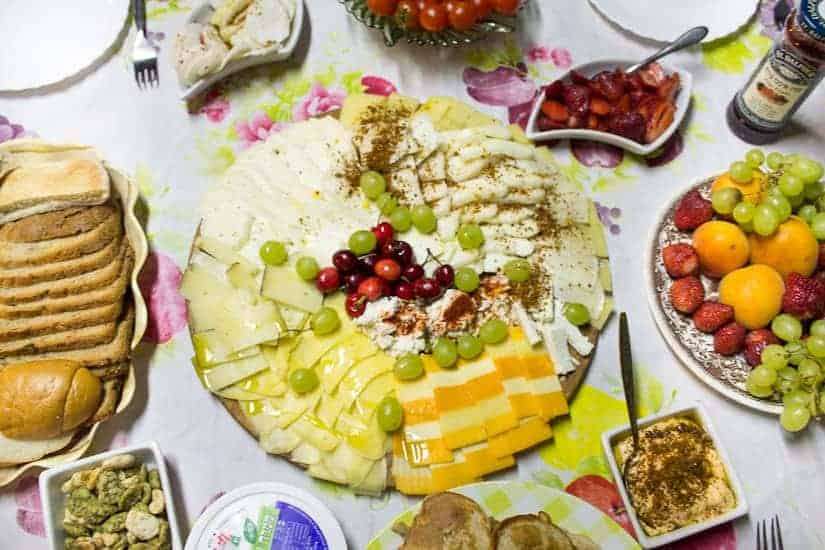
5.0 from 3 votes
How to assemble a cheese platter
Ours is by no way a complete, or expert approach. But it's how my family does it, and we seem to pull together a pretty good platter on most occasions. These guidelines are meant to match most pockets, for as you can imagine, my mother's budget to buy cheese far surpasses my own.
Course:
Snacks
Cuisine:
gluten-free
Ingredients
- Go for a variety of textures. Always try to include a soft hard, and semi-ripened cheese.
- As in most things in life don't go for quantity. Putting together a cheese platter when you're short on cash need not necessitate a bank robbery - go with two or three good cheeses you like, instead of burning your entire budget on that imported Brie.
- Balance the tried and true with the adventurous. Unless you're buying cheeses abroad where the variety can be mesmerizing, limit yourself to one new and untested cheese in a platter. The others should be known (and preferably, appealing) to you - guests are not your experiment subjects.
- Try drizzling some of your soft or semi-ripened cheeses with olive oil. Edam Havarti, certain types of chèvre, Haloumi and of course, Labaneh, all love a good fruity oil. Brie, not so much.
- If you have an overly large log of soft goat cheese that you're getting tired of cut it into a few parts the day before. Keep one as is, wrapped in plastic wrap. Roll another in a mixture of finely chopped herbs like chives, parsley (or cilantro), tarragon and basil. The last one can be rolled in finely chopped walnuts, pistachios, or almonds. Wrap them individually in plastic wrap and let cool in the fridge, at least for a few hours and preferably for a day.
- Everyone knows fresh herbs go well with cheese but spices also make a good pairing. In Israel, we sprinkle za'atar on almost everything, but some other spice and nut mixtures will do as well (dry onion, pumpkin seeds and a bit of cumin is a good combination; experiment and find others you like).
- Don't overburden your cheeses with bread. Offer some crackers or dark rye bread but don't put out so much of it that it'll stuff everyone up.
- Instead always offer nuts with your cheeses. They're a great palette cleanser, and they bring out the best in creamy, fatty ones like Gouda, Edam, and Roquefort. Walnuts, pecans, and cashews are all good choices.
- Fruit also make a good pairing. Apples pears and grapes are known to get along with cheese, but semi-ripe peaches, nectarines, and unripe mangoes will also surprise you.
- Crisp vegetables like kohlrabi and radishes are great replacements for bread.
- Always serve cherry tomatoes with your cheese. My family's favourite treat is wrapping a slice of sharp cheese like cheddar or Gouda around a cherry tomato or cutting the cherry tomato in half and spooning some cream cheese or feta in there. Yumm.
- My mother always slices her cheeses for ease of eating. In Canada I serve blocks, letting guests cut off their own pieces, but I have to say that my mother's approach seems to work better. The cheese disappears more quickly, and it's so much easier to grab when everyone is around the same table. However, if you're serving it for a long party, stick to the blocks - keeping cheese in a block helps it retain moisture and not dry out in sweat.
- Always remove cheeses from the fridge about 30 minutes before serving. This will allow them to come to room temperature elicit more of their flavours, and make them more sliceable. If you're serving Brie or Camembert, give them an hour and a half.
Instructions
- Serve, slice, pair, eat and enjoy!
Cup of Yum